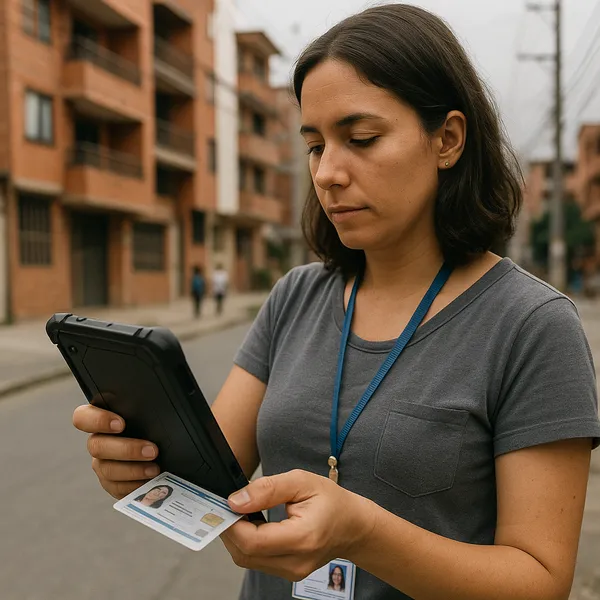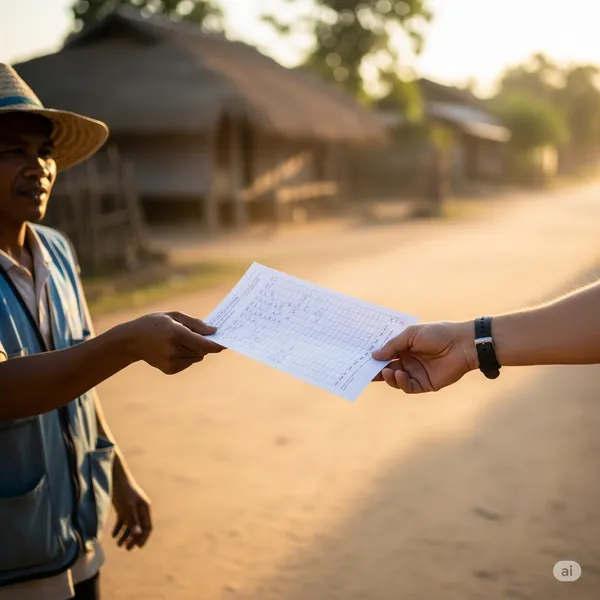Leveraging Local Networks for Remote Access and Monitoring
Published on: Sat Apr 01 2023 by Ivar Strand
In many of the world’s most fragile and conflict-affected situations, direct and consistent access for international staff is not a viable assumption. Security protocols, political restrictions, and logistical barriers often create a significant distance between programme management and the reality of implementation. This presents a critical paradox: the need for accurate, timely information is highest precisely where the ability of an organisation to gather it is at its lowest.
This information gap poses a material risk to financing agencies and implementing organisations alike. Without visibility, it is difficult to adapt to changing circumstances, verify results, or manage fiduciary risk effectively. The solution lies not in technology alone, but in the cultivation of trusted local networks. This paper addresses the key questions surrounding the use of these networks as the essential human element in remote monitoring.
What is the fundamental information gap in remote contexts?
The challenge extends beyond a simple lack of data. While remote sensing technologies like satellite imagery can verify physical structures and call centres can conduct basic surveys, they often miss the essential texture of the operating environment. The true information gap is the loss of granular, real-time situational awareness.
This includes an understanding of subtle but critical factors: shifts in local power dynamics, the erosion of community acceptance, emerging security threats, or the informal barriers preventing beneficiaries from accessing services. It is the loss of the “feel” for a place—the kind of insight that experienced staff gather through continuous presence and informal interaction. This nuanced understanding is precisely what local networks are uniquely positioned to provide.
How do local networks fill this gap?
Carefully managed local networks of enumerators or community monitors serve as persistent “eyes and ears on the ground.” Their value is derived from four distinct attributes:
- Hyper-local Access and Knowledge. Local enumerators can typically operate with greater freedom and discretion in areas deemed inaccessible to outsiders. They possess an innate understanding of the cultural, political, and security landscape that cannot be replicated by external staff.
- Continuous Presence. Unlike periodic field visits that provide a snapshot in time, a resident network provides a continuous stream of observation. This allows for the detection of trends, the documentation of intermittent events, and the provision of early warnings about developing problems.
- Linguistic and Cultural Fluency. The ability to communicate without translators and to interpret subtle social cues enables a deeper and more accurate form of data collection, particularly for qualitative and perception-based information.
- Ground-Truthing. Local networks are the essential link for validating data from other remote sources. They can confirm whether a school seen on a satellite image is functional, whether medicines delivered to a clinic are available to patients, or whether a road is passable after a flood.
What are the primary risks, and how are they managed?
Leveraging local networks requires a sober assessment and mitigation of significant risks. The two primary areas of concern are the safety of the individuals involved and the integrity of the data they collect.
- Safety and Discretion. The principle of “do no harm” is paramount. Asking local staff to gather information can place them at risk. Management of this risk requires low-profile methods, robust communication and security protocols, and a clear understanding that no data point is worth endangering an individual. Enumerators must have the autonomy to refuse any task they assess as unsafe.
- Data Integrity. Local enumerators are members of their communities and can be subject to pressure or bias. Ensuring the objectivity and accuracy of their reporting is a core technical challenge. At Abyrint, we have found that this is managed through a system of professional oversight that includes:
- Careful, criteria-based vetting and recruitment.
- Intensive training on the principles of neutrality, observation versus interpretation, and specific data collection methodologies.
- Systematic cross-validation of all incoming information. Findings from a single source are treated as an indicator, not a fact, until corroborated by other independent sources.
The Human Element in Remote Verification
Ultimately, integrating local networks into a monitoring system is about more than just contracting data collectors. It is about cultivating a source of structured, local insight. These networks transform monitoring from a periodic, top-down exercise into a continuous, ground-up process.
For programme managers and financing agencies, this provides a more resilient and dynamic form of oversight. It allows for a shift from reactive problem-solving, often based on outdated reports, to proactive risk management informed by a near-real-time understanding of the operating environment. By investing in the professional management and support of these “eyes and ears,” we can maintain visibility and make better decisions in the places where it is most challenging—and most important—to do so.



